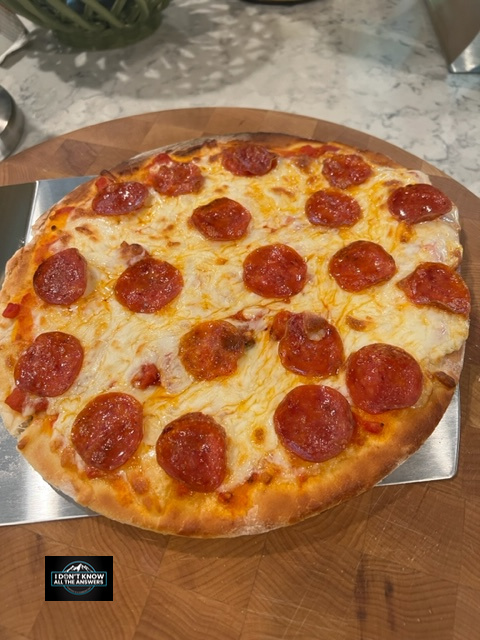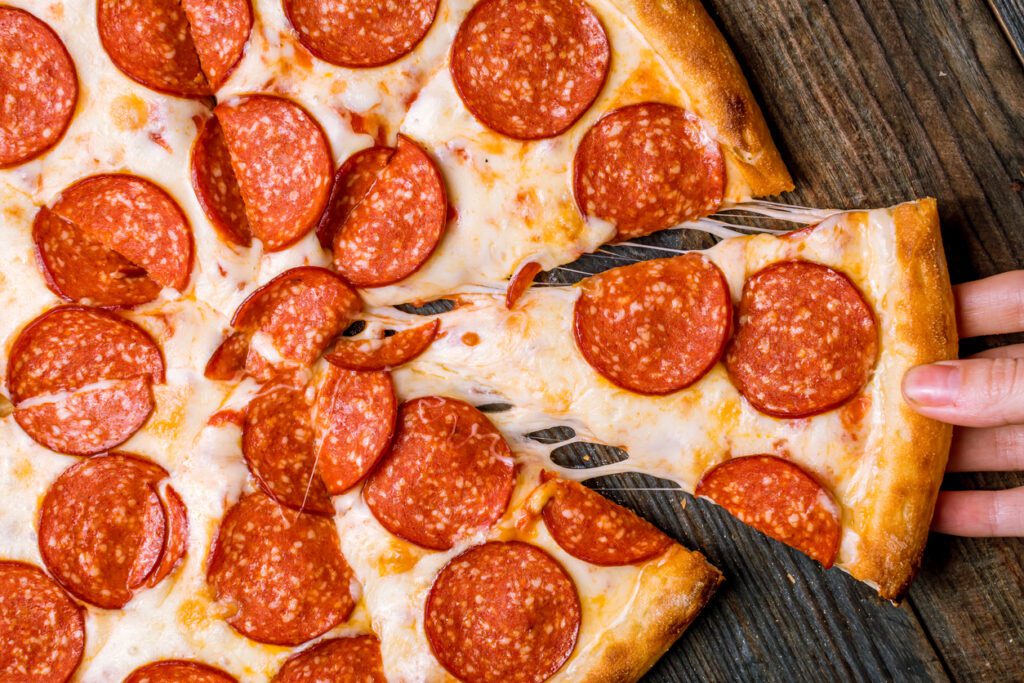I want to try making pizza for my next cooking adventure. Jim bought a pizza maker oven and additional supplies. There are so many pizza dough recipes I wasn’t sure where to start, so I decided to make the pizza dough following the recipe in my breadmaker manual. For this recipe, you use bread flour instead of pizza flour. This recipe isn’t preferable for the pizza oven, but it is a starting point. I will include the recipe at the end of this blog and as I try different recipes in the future. I will share the recipes and the results with you.
Note: I have a Breadman Bread Maker, Model TR520RD


Pizza holds a special place in our hearts and stomachs as one of the world’s most beloved and universally popular foods. From its humble origins in Italy to its spread across the globe, pizza has undergone a fascinating journey that reflects humanity’s cultural and culinary diversity. Before I share the recipe, I want to explore the history of pizza and discover its origins, evolution, and worldwide appeal. Get ready to satisfy your hunger for knowledge and cravings for the iconic cheesy, saucy, and doughy goodness!
The earliest predecessor of pizza can be traced back to ancient civilizations such as the Greeks, Egyptians, and Syrians, who used flatbreads as a staple food. However, the modern pizza as we know it originated in Naples, Italy, around the 16th century. At that time, the poor people of Naples started using tomato sauce, cheese, and other toppings on their flatbreads to make a cheap and tasty meal. The word “pizza” is derived from the Neapolitan dialect word “pizzaiolo,” which means “pizza maker.” The first pizzeria in the world, Antica Pizzeria Port’Alba, was opened in Naples in 1830 and still exists today!
In the late 19th century, pizza became a popular street food in Naples and spread to other Italian cities, especially after the unification of Italy in 1861. However, it was in the early 20th century that pizza started to gain popularity outside of Italy, thanks to Italian immigrants who brought their culinary traditions to the United States and other countries. In 1905, the first pizzeria in America, Lombardi’s, was opened in New York City by a Neapolitan immigrant named Gennaro Lombardi. Today, pizza is one of the most popular fast foods in the U.S., with an estimated 3 billion pizzas sold yearly!
As pizza spread worldwide, it also underwent various adaptations and innovations to suit local tastes and preferences. For example, in Japan, pizza toppings can include squid, eel, and mayonnaise, while vegetarian toppings like paneer and tikka masala are standard in India. In Brazil, pizza toppings can include sweet condiments like chocolate and guava paste, while in Russia, pizza includes caviar. Even within Italy, there are many regional pizza variations, such as the Neapolitan pizza, the Roman pizza, the Sicilian pizza, and the Ligurian focaccia.
The History of Pizza is a fascinating and inspiring story showcasing food’s power to connect people, bridge cultures, and ignite passions. From its humble beginnings in Naples to its modern variations worldwide, pizza has evolved and adapted to suit changing times and tastes. Whether you prefer thin crust or thick crust, classic Margherita, or experimental fusion, one thing is sure – pizza is here to stay as a delicious and beloved icon of culinary heritage. So next time you bite into a hot and fresh slice of pizza, savor the flavors and the rich history behind this timeless food. Buon appetito!
Despite its global popularity and diversity, pizza remains a simple and delicious food that appeals to people of all ages, backgrounds, and cultures. Besides its mouthwatering taste, pizza is also a symbol of community, sharing, and creativity. Whether you enjoy making your pizza at home, ordering a delivery from your favorite pizzeria, or trying out exotic toppings and styles, pizza is a comfort food that never fails to satisfy your appetite and soul.

Pizza Crust Dough Recipe
Breadman Bread Maker, Model TR520RD, Pizza Crust Dough, page 57
Pizza Crust Dough Ingredients:
- Water 80°F/27°C 3/4 cup
- Oil 1 Tbsp.
- Sugar 1 Tbsp.
- Salt 1/2 tsp.
- Dry Milk 1 Tbsp.
- Bread Flour 2 1/4 cups
- Bread Machine Yeast 3/4 tsp.
Steps:
- Place on a lightly floured surface. Divide and press into a 12-inch pizza pan, raising the edges.
- Spread pizza sauce over the dough and sprinkle with toppings.
- Bake 425°F/218°C for 20 minutes or until the crust is golden brown around the edges.


Thank you for reading this blog post, and if you have any questions or comments, please leave them in the Comments section below.
Copyright © 2019. I Don’t Know All The Answers®, Nikki Mastro.
All of my photographs and documents are Copyrighted.
The main photo for this blog post is from the iStock.com library.
No part of this website, including text, photographs, and documents, may be reproduced, stored in a retrieval system, or transmitted in any form or by any means without written permission from the copyright holder. All unauthorized use is strictly prohibited. If you choose to copy or share any information from my site, you must provide a link to the source. I appreciate your cooperation.
For further information concerning “I Don’t Know All The Answers®.“
– Blog: https://www.idontknowalltheanswers.com
– Facebook: (Note: Facebook account needed) https://www.facebook.com/idontknowalltheanswers/
– Instagram: https://www.instagram.com/idontknowalltheanswers/
– Youtube Channel: https://www.youtube.com/@idontknowalltheanswers1954


Bookmarked, so I can continuously check on new posts! If you need some details about Website Design, you might want to take a look at Webemail24 Keep on posting!
An excellent read that will keep readers – particularly me – coming back for more! Also, I’d genuinely appreciate if you check my website Seoranko about Blogging. Thank you and best of luck!
You rocked this subject and have astounding insights. I also work hard in putting together great content about PR Marketing, feel free to visit Article Star
thank you for making this article very useful and keep up the good work